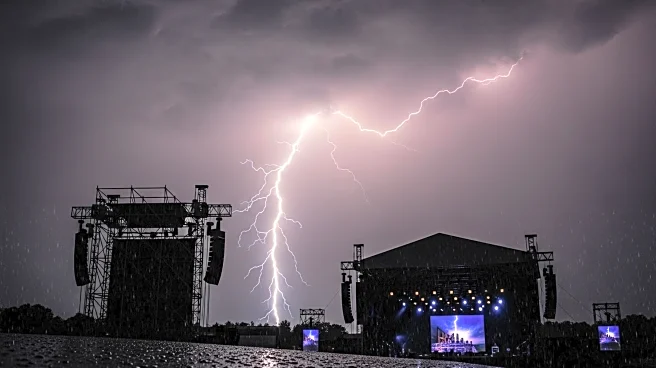What's Happening?
Travis Scott faced criticism from fans for starting his Johannesburg concert late, attributing the delay to weather conditions. Performing at the FNB Stadium, Scott was reportedly over an hour late, prompting fans to express their dissatisfaction online. Scott responded by explaining that a lightning delay was responsible for the postponement, asserting that he is 'never late to a night show'. Despite the initial setback, fans left the concert satisfied with Scott's performance.
Why It's Important?
The incident highlights the challenges artists face in managing live performances, particularly when external factors like weather impact scheduling. Scott's response underscores the importance of communication between artists and their audiences, as transparency can mitigate negative perceptions. The event also reflects the broader dynamics of live music events, where logistical issues can affect fan experiences and artist reputations. Scott's ability to maintain fan satisfaction despite delays demonstrates his strong connection with his audience.
What's Next?
As live performances continue to be a major aspect of the music industry, artists and event organizers may need to develop more robust contingency plans to address unforeseen delays. Scott's experience could prompt discussions on improving communication strategies and enhancing fan engagement during such incidents. Additionally, the music industry may explore technological solutions to better predict and manage weather-related disruptions, ensuring smoother event execution and maintaining audience satisfaction.
Beyond the Headlines
The incident raises questions about the expectations placed on artists and the pressures of live performance schedules. It also highlights the role of social media in shaping public perception, as fans' immediate reactions can influence an artist's reputation. The event underscores the importance of adaptability and resilience in the entertainment industry, where external factors can impact planned events. Scott's handling of the situation may serve as a case study for other artists facing similar challenges.











